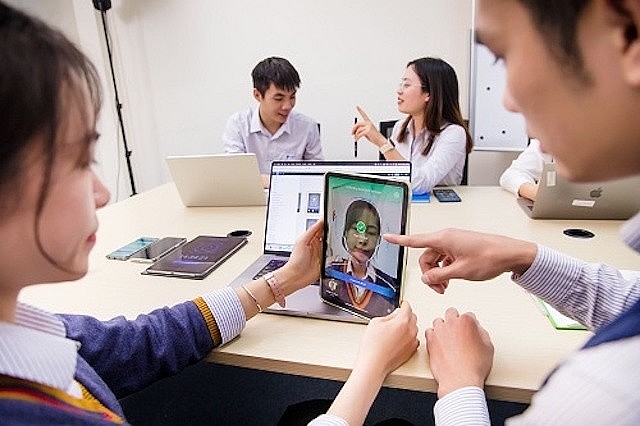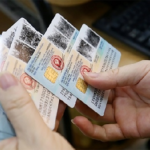From July 1, 2024, Vietnamese banks will require customers to authenticate themselves using facial biometrics for certain online transactions, as per the State Bank of Vietnam’s Decision No. 2345/QD-NHNN. This added security measure aims to protect customers from fraud and prevent theft of their assets.
Transactions that will require biometric authentication include those over VND 10 million, cumulative daily transfers exceeding VND 20 million, and first-time mobile banking app users or those using a different device than their last mobile banking transaction.
For customers without an e-ID card with a chip, biometric authentication will be done by matching their biometric data with that stored in the biometric database during an in-person meeting at a transaction counter. For those with an e-ID card but using a phone that doesn’t support NFC (Near-Field Communication), authentication for transfers over VND 10 million can be done through electronic identification and authentication systems integrated with the bank’s internet or mobile banking applications.
Alternatively, for customers with e-ID cards, the bank can match their biometric data with that stored on the chip of their e-ID card, issued by the police, using a chip reader at the transaction counter. Or, they can authenticate through the electronic identification and authentication system.

Illustrative image
As the effective date approaches, banks, e-wallets, and users are rushing to update their biometric data. Users can do this on their smartphones by taking photos of the front and back of their e-ID card, scanning the NFC on the card, and then scanning their face and entering an OTP.
While most people find the process simple and quick, some have encountered difficulties, especially when scanning the NFC on their e-ID cards, as shared in technology forums.
Biometric authentication is considered the most secure and safest technology today, offering maximum protection against fraud and impersonation. Traditional authentication methods like passwords and one-time passwords (OTPs) are increasingly vulnerable to attacks, whereas biometrics, being unique to each individual, provide an extra layer of security that is challenging to replicate.
This solution enables service providers and authorities to accurately identify account holders, transaction initiators, and beneficiaries, safeguarding customer accounts and reducing fraud risks for banks.
Surge in QR Payments Leads to Bank ATM Closures
By the end of January 2024, the market witnessed a decrease of 1.70% in the number of ATMs compared to the same period in 2023, with a total of 20,986 ATMs. On the other hand, there was a significant increase of 32.68% in the number of POS machines, reaching a total of 554,580 POS. The month of January 2024 also saw a remarkable surge in QR code transactions, with a staggering increase of 892.95% in terms of quantity and an impressive 1,062.01% in terms of value.








![[Photo Essay]: Experts, Managers, and Businesses Unite to Forge a Path Towards Sustainable Green Industry](https://xe.today/wp-content/uploads/2025/07/z678592918-150x150.jpg)


![[Photo Essay]: Experts, Managers, and Businesses Unite to Forge a Path Towards Sustainable Green Industry](https://xe.today/wp-content/uploads/2025/07/z678592918-100x70.jpg)







